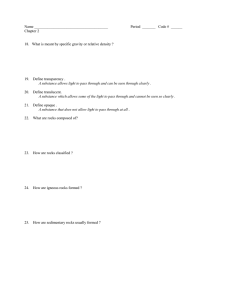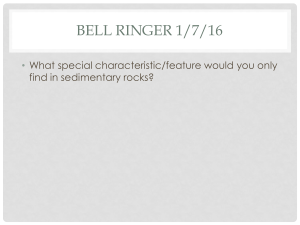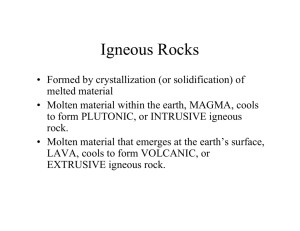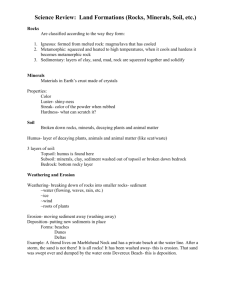NOTES: IGNEOUS ROCKS
advertisement
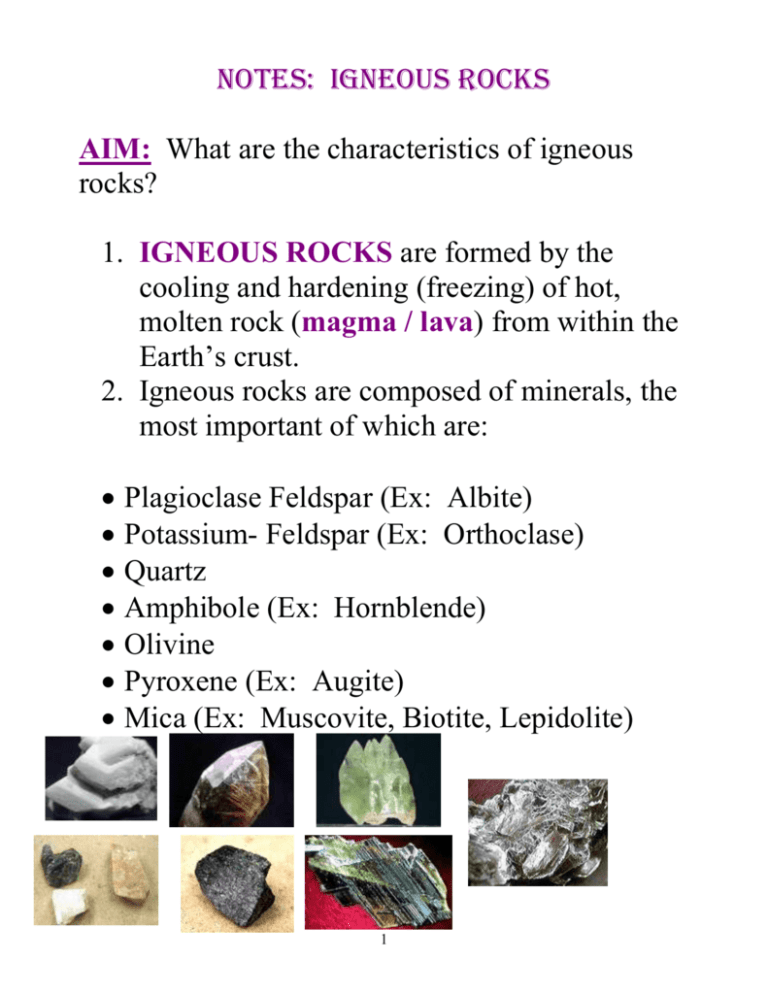
NOTES: IGNEOUS ROCKS AIM: What are the characteristics of igneous rocks? 1. IGNEOUS ROCKS are formed by the cooling and hardening (freezing) of hot, molten rock (magma / lava) from within the Earth’s crust. 2. Igneous rocks are composed of minerals, the most important of which are: Plagioclase Feldspar (Ex: Albite) Potassium- Feldspar (Ex: Orthoclase) Quartz Amphibole (Ex: Hornblende) Olivine Pyroxene (Ex: Augite) Mica (Ex: Muscovite, Biotite, Lepidolite) 1 3. Crystallization of minerals from a magma occurs between 1200 – 600C. Those minerals with the highest freezing point crystallize first and thus develop larger, well-formed crystal shapes. *ENR* Those minerals that crystallize at lower temperatures are forced to grow in the spaces between the earlier formed crystals and are commonly irregular in shape with few welldeveloped crystals. 4. Classification Based on Where Rocks Cooled: Extrusive (Volcanic) – formed when hot lava pours out of a volcano and solidifies. Cooling is fast (seconds – weeks) forms smaller crystals (demo) Intrusive (Plutonic) – formed when magma solidifies beneath the surface. Cooling is slow (up to 105 years) forms larger crystals 2 5. Types of Magma – all are very hot solutions of silicates > 1100C Felsic (High in silica) – thick, high % SiO2 Low density More Aluminum Light in color Forms rocks composed of Quartz, Orthoclase, Muscovite, and some Amphibole Mafic (Low silica) – more fluid, less SiO2 High density Hotter More Ca, Fe, and Mg Dark in color Forms rocks composed of Hornblende, Pyroxene, Biotite, and Olivine 3 6. Textures of Igneous Rocks: Range from glassy (obsidian) to coarse (granite) The size of the crystals depends on the cooling rate: See Demo Slow cooling large crystals (coarse) Environment of formation_______________________________ Rapid cooling small crystals (fine) Environment of Formation_______________________________ Volcanic eruptions can cause lava to be churned into a froth (suds) of lava and gas bubbles. Once solidified, this process forms Pumice or Scoria. The bubbles of gas are called gas bubbles. (Vesicular texture) *ENR* Porphyrytic rocks have a fine-grained crystal matrix with large crystals embedded throughout (phenocrysts) This is the result of two cooling periods, first __slow____, then _____fast_____. (Ex: A once-dormant volcano erupts) SEE ESRT CHART 4
